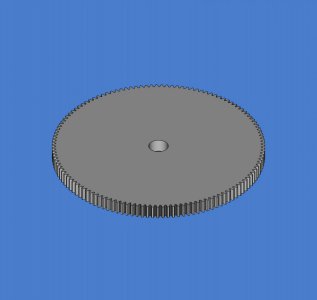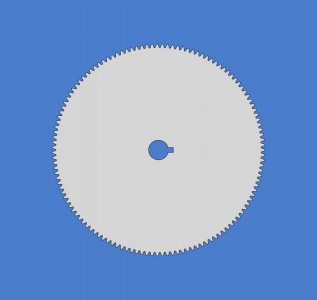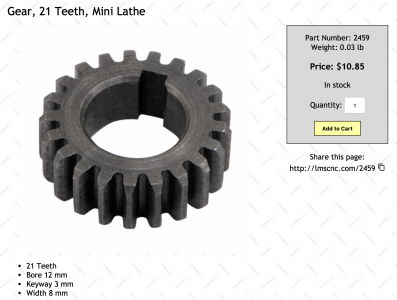- Joined
- Dec 18, 2019
- Messages
- 6,464
What's the bore and key way? I just did an 8mm thick 127T M1 gear with a 12mm bore in FreeCAD. Took about 2-1/2 minutes, only because I messed up the order of operations. Very easy, once you know the basics of FreeCAD. Likely the same with other CAD packages.@MaverickNH
I was thinking about your desire to have a slower feed rate and the suggestion that you get a 127T gear. You could get two of these 3D printed, then assuming that they will fit, replace the 80/20/80/20 arrangement with 127/20/127/20 and I think this will get you to a TPI value of
645.16 or inverting this a feed rate of 0.00155 inch/turn. The nice thing about this would be that just using one of the 127 gears could also be used at the center position to improve your metric threads.
Just a passing thought. I have a "Prusa i3_MK3S" 3D printer. If you can make a 3D printer CAD STL file for it I would print them for you. I would like to see how well this would work anyway. Prusa even supplies a slicer software to convert from the CAD STL file to the Gcode file. https://www.prusa3d.com/page/prusaslicer_424/
I even think that FreeCAD software will generate 3D gears pretty much automatically from the gear tooth size and number of teeth or diameter info.
Dave

Key way is 3mm, bore is 12mm, 8mm thick. New pic with key way.

What clearance should I give? I made the key 3.1mm wide and the bore 12.1mm since inside dimensions tend to shrink when printing. Is that ok?
Attachments
Last edited:



